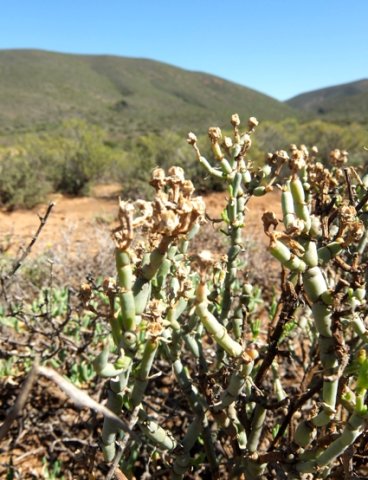Mesembryanthemum junceum, another asbos

Author: Ivan Lätti
Photographer: Thabo Maphisa
Asbos (ash bush) is an Afrikaans name shared by (at least) two well-known, but unrelated plants of the Little Karoo: the one is Mesembryanthemum junceum of the Aizoaceae or vygie family, the other, Pteronia incana, belonging to the Asteraceae or daisy family.
The former has pink flowers, the latter yellow flowerheads; very different plants earning the same name for different reasons: P. incana has ashen-grey leaves, an obvious explanation; M. junceum was traditionally used in building a semi-circular shelter around a fireplace or cooking area where ashes would be present, the asbosskerm. Sufficiently plausible?
The second reason for the name in the case of M. junceum is more compelling: the uses of the alkaline ashes of the burnt stems as lye-ash for making soap and for treating grapes to make raisins come a long way in local culture.
This asbos replaced Salsola aphylla, the seepganna, as a source of soap lye at some point in local history. The local ancestors were great experimenters and inventors, albeit not great recorders or formal researchers (Vlok and Schutte-Vlok, 2015; Van Wyk and Gericke, 2000; Smith, et al, 1998; iSpot).

